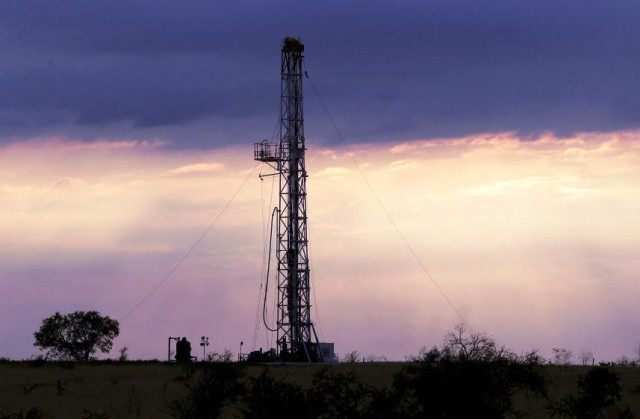The U.S. shale oil industry is about to write down up to 40 percent of its oil reserves, despite America now having about two trillion barrels of recoverable oil resources.
The major difference between a reserve and a resource in the oil industry is that banks only lend on reserves that can be produced today, given current prices and technologies. This definition was tweaked in a 2009 Securities and Exchange Commission accounting change to reflect the fast growth of shale oil reserves.
It seems almost humorous now to look back at President Barack Obama’s weekly television address to the nation in support of expanding sustainable energy subsidies in March 2012, when he said, “But you and I both know that with only 2 percent of the world’s oil reserves, we can’t just drill our way to lower gas prices.”
At the time, crude oil was selling for $106.15 in the U.S. and the international Brent Crude was selling for $124.93. Oil was cheaper in the U.S. because shale drillers’ success had moved U.S. oil reserves up slightly to 27 billion barrels, while the rest of the world’s production was supposedly in terminal decline.
But by the end of 2014, U.S. crude oil proved reserves amounted to 39.9 billion barrels–an increase of 3.4 billion barrels from 2013, and up almost 11 billion barrels from the date of Obama’s speech. In 2014, the average price of crude oil as calculated under the SEC standard on the first day of each month was $95 a barrel.
But that huge spike in U.S. oil production and reserves broke the OPEC cartel’s manipulative control of production, and the average price of crude oil fell in 2015 to $51 a barrel. Prices have continued to collapse, falling to $37.74 recently as OPEC members have panicked and increased production to try to generate enough cash flow to meet debt payments.
This has been great news for U.S. consumers, who were able to increase their consumption by over 1 percent this year, which explains why the U.S. economy has been the best performing in the world.
But those SEC accounting rules cut in both directions. Lower oil prices mean that a huge chunk of the nation’s shale oil reserves that were wildly profitable at $95 a barrel are a loser at $51 a barrel and must be written down.
Companies that were the biggest winner in the “shale game” are about to take the biggest “haircuts.” Oklahoma’s Chesapeake oil will cut its inventory by 45 percent; Colorado’s Bill Barrett Corp. will slash 40 percent’ and Texas’ Oasis Petroleum Inc. will whack 33 percent off.
Even after the write-downs, the U.S. will have more proven reserves than in 2012 when President Obama was suggesting that the world supply of oil had peaked and was in permanent decline.
Despite America extracting about 185 billion barrels of oil since our founding, leading researchers at Rice University predict that the U.S. could have 2 trillion barrels of recoverable oil, enough to meet America’s current demand for the next 285 years.
The reserves may be written down, but if prices rise they will come right back.

COMMENTS
Please let us know if you're having issues with commenting.